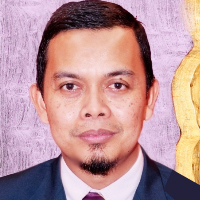The “manna” extracted from the ash trees still cultivated in Sicily from mythical food to pharmaceutical and nutraceutical resource
Published on: 30th August, 2022
“Manna” is the product obtained from the solidification of the elaborate sap that comes out of the incisions made during the summer season on the stem and on the main branches of some species of the genus Fraxinus (Oleaceae). The cultivation of manna ash trees dates back to ancient times in Sicily and elsewhere ash trees – known as sacred trees, a symbol of abundance and therefore auspicious – was increasingly widespread until the middle of the last century. Subsequently, however, the crop underwent a progressive decline, remaining relegated to restricted areas of Sicily, in particular in the Madonie district (Palermo, Italy). In this brief review, the essential characteristics of the manna and the ash trees from which it is extracted are summarized. The aspects of the current productivity of manna in the Sicilian territory and the implications of a potential recovery and increase of an ancient craft, ash tree cultivation, are also reported in a perspective of sustainable development and green economy for the Mediterranean area and beyond. Finally, the authors remember what has been done to ensure the conservation not only of the active cultivation of manna ash but also of all the relative agro-biodiversity. The conservation of the living germplasm of the ancient cultivars recovered in the Madonie area (Palermo, Sicily) represents one of the most qualifying results.
The smart agriculture applications (current and future)
Published on: 5th December, 2022
Smart agriculture applications (monitoring, sensing, automation and control) of micro-climate and environmental conditions for different agriculture production sectors and scales, decision-makers and researchers need to take it into consideration to strengthen the efforts of mitigation and adaption of climate change impacts as well as maximize the natural resources use efficiencies and food production. Motivate the farmers to implement smart agriculture applications, especially in developed and poor countries, strong cooperation for technology transfer and build up the technology infrastructure of information and communication (ICT) plus the internet of things (IoT).
Integrated vermicomposting and green roof techniques for food production in urban and rural areas
Published on: 5th December, 2022
Thousands of tons of biodegradable organic waste generates in urban and rural areas every day, creating disposal problems. Urban organic waste can be converted into valuable output products (vermicompost, vermin-liquid, and earthworms) by applying a vermicomposting technique that had different. Implementing green roofs via soilless culture systems as micro-scale farms led to increasing natural resource use efficiencies as well as producing fresh food. The integration of both techniques will create not just reduce pollution and climate change impacts but also for increasing food production and security in urban, enhance the lifestyle and increase public awareness of environmental issues. This process is profitable at any scale of operation.
Agriculture High-Quality Development and Nutrition
Published on: 24th October, 2024
Modern Agricultural production wants to efficiently produce plant products and benefits to meet people's needs. However, because of better plant species and varieties, overuse of fertilizer and overdose of pesticide alters the plant resources relationship, resulting in soil degradation, vegetation decline, and crop failure or waste of resources, which influence the quality of fruit and benefit and are unfavorable for the sustainable utilization of nature resources and crops high-quality development. After a couple of years of study, the results showed that Agricultural development went into agricultural high-quality development in 2017, which is to use effective measures or methods to maximize yield and benefits and meet the need of people's need for better Agricultural produce and a better life. The theory foundation of the sustainable utilization of natural resources and Agriculture high-quality production is the resources use limit by plants, vegetation carrying capacity, and critical period of plant resources relationship regulation. The methods of Agriculture high-quality development are to select excellent plant species or varieties based on site conditions and market needs before planting crop young plants and sowing seeds, adopt appropriate initial planting density when planting crop young plants and sowing seeds, and regulate the relationship between plant growth and resources need in the process of crop production in a timely and appropriate amount, especially the chemical fertilizer and pesticide to obtain the maximum yield and benefits and realize the sustainable utilization of natural resources and achieve agricultural high-quality development.




